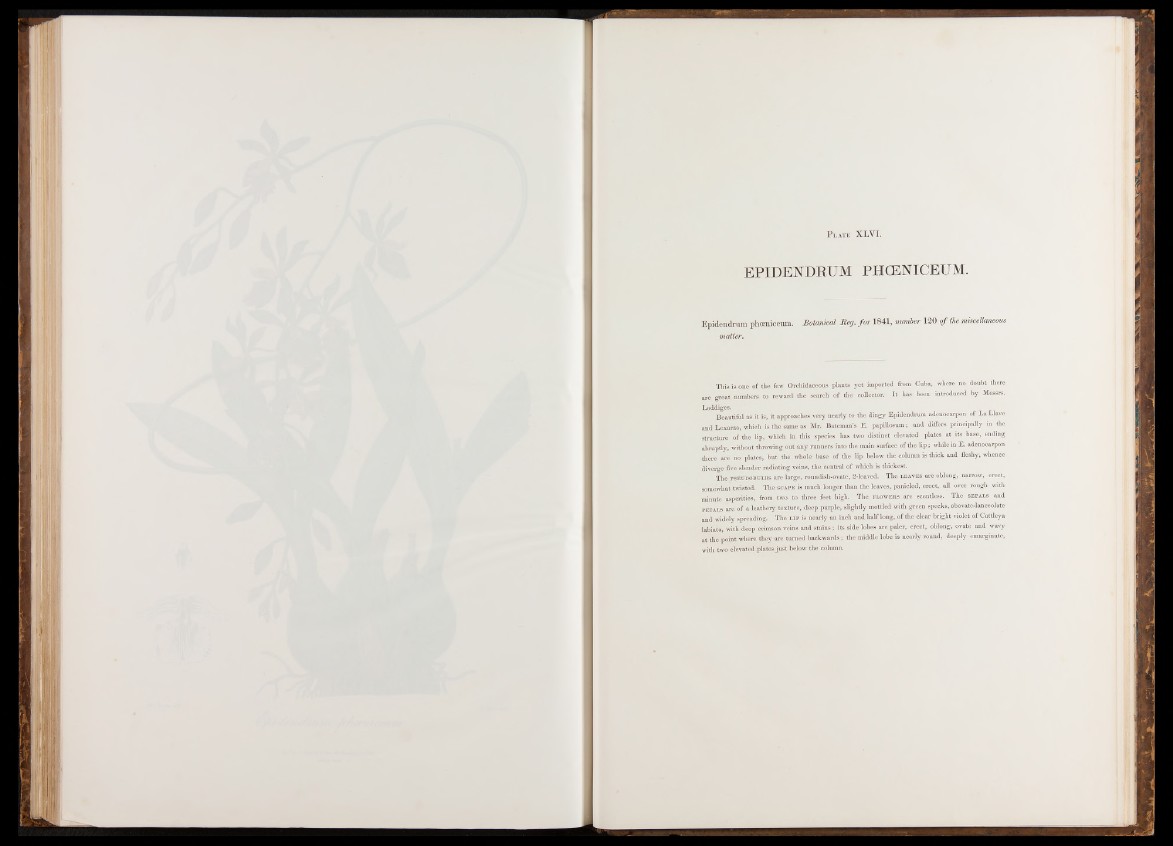
P late X L V I.
EPIDENDRUM PHCENICEUM.
Epidendrum phceniceum. Botanical Beg. fo r 1841, number 120 of the miscellaneous
matter.
This is one of the few Orchidaceous plants yet imported from Cuba, where no doubt there
are great numbers to reward the search of the collector. It has been introduced by Messrs.
Loddiges.
Beautiful as it is, it approaches very nearly to the dingy Epidendrum adenocarpon of LaLlavc
and Lexarza, -which is the same as Mr. Bateman's E. papillosum; and differs principally in the
structure of the lip, which in this species has two distinct elevated plates at its base, ending
abruptly, without throwing out any runners into the main surface of the lip; while in E. adenocarpon
there are no plates, but the whole base of the lip below the column is thick and fleshy, whence
diverge five slender radiating veins, the central of which is thickest.
The pseudobulbs are large, roundish-ovate, S-leaved. The leaves are oblong, narrow, erect,
somewhat twisted. The stu n is much longer than the leaves, panicled, erect, all o%. itsugh with
minute asperities, from two to three feet high. The flowebs are scentless. The sepals and
petals are of a leathery' texture, deep purple, slightly mottled with green specks, obovate-lanceolate
and widely spreading. The l ip is nearly an inch and half long, of the clear bright violet of Catfleya
labiata, with deep crimson veins and stains: its side lobes, are paler, erect; oblong, ovate and wavy
at fhe point where they are turned backwards; the middle lobe is nearly round, deeply emarginate,
with two elevated plates just below the column.